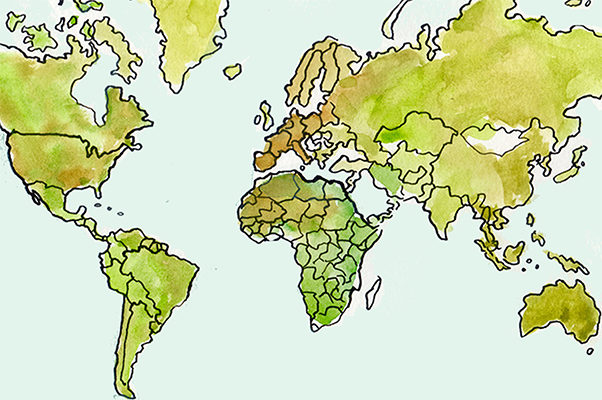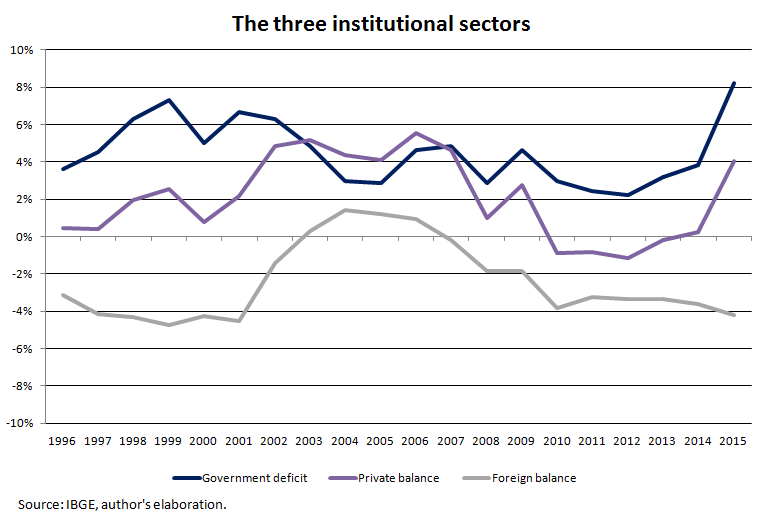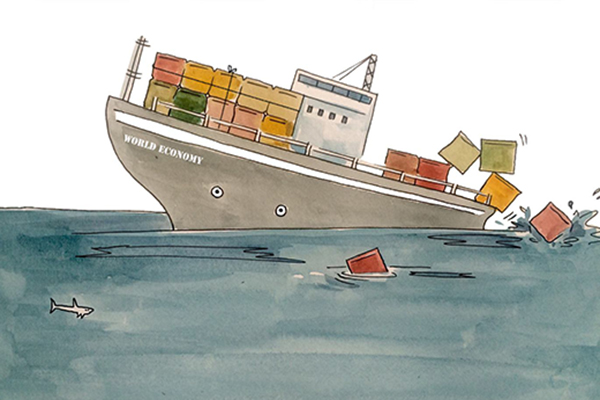Brazil’s current economic policy follows the logic of a fairytale. And unless President Temer wakes up to reality, the Brazilian people will continue to suffer the consequences.
In conservative circles, the solution advocated for economic recovery is a reduction in government spending. The argument behind it is that a large government deficit lowers the market’s confidence in its ability to repay. This lower confidence then drives private investment away.
By the same logic, if the government cuts down the deficit, markets are reassured of its commitment to be a good payer. This newly gained confidence drives up private sector investment and the economy grows.
While this may sound like a great way to boost a struggling economy, it’s not. To expect that a reduction in public spending will lead to an increase in private spending in the middle of a recession is like believing in an economic “confidence fairy.” Picture a creature dressed in dollar bills, fluttering eyelashes at private investors while the government takes a step back. With enough fairy dust, investors regain confidence, and the economy turns into a sparkly paradise. It sounds nice, but it’s not real.
The idea of expansionary austerity is a dangerous one. While most of the arguments against government deficit rest upon flawed economic theory, the confidence fairy has its backbone solely on psychological factors that play into private investment decisions. However, what a depressed economy needs is a boost in aggregate demand, many times driven by public investment. Even fairy-enthusiasts, as the IMF, have expressed increasing skepticism towards the ability of austerity to expand an economy.
There are plenty of recent examples that cast doubt on the confidence theory. Take the low growth trap of the world economy, for instance. Several countries struggled with low growth for almost a decade despite their efforts to reduce their budget deficit. As monetary policy played an excessive role, fiscal policy ― and by effect aggregate demand ― was ostracized. New investments do not take place in a depressed economy regardless of the interest rates level or the government debt; in Minsky’s words, investment does not take place as long as the demand price of capital is lower than the supply price of capital.
Nevertheless, Brazil’s Michel Temer continues to be captivated by the fairytale. Amid continuous involvements in the corruption scandals, Temer introduced ambitious austerity measures to cut government spending and reduce the fiscal deficit. Placing his faith in the confidence fairy, he portrays his policies as the only path to recovery and growth ― as if there were a certain magic debt number to achieve.
But thus far, Temer’s policies have failed miserably. Expecting to see the fairy do wonders, 2016’s 3.6% decline in GDP was “unexpected” to Temer’s team. That’s a harsh reality to wake up to, especially since 2015 showed a similar decline in growth. For 2017, the economy is expected to grow 0.5 percent; but growth projections keep getting adjusted downward, and a third year of recession is only half a percentage point away.
Brazil’s collapse in domestic demand is visible in the economy’s capacity utilization. Averaging 73.5 percent in 2016, it’s reached the lowest level since the early 1990s, when the country was plagued by hyperinflation. At this rate, Brazil will have to get through a long period of idle capacity until new private investments can foster demand. Furthermore, the efforts to reduce the government deficit seem to have been futile. The budget deficit has actually surged due to the reduction in tax revenues and the increasing burden of interest rate payments.
Despite everything, Temer isn’t giving up on the confidence fairy yet. Earlier last month, he announced a cut of $42.1 billion reais (approx. US $13.5) in the government budget, nearly a fourth of which on the Growth Acceleration Program for social, urban, and energy infrastructure investment. Other significant cuts were made to the ministries of defense ($5.7 billion reais), transportation ($5.1 billion reais), and education ($4.3 billion reais).
As you may expect, none of this helps to create jobs. On April 28, it became known that the unemployment rate reached a record-high 13.7% for this year’s first quarter. Since the last quarter of 2016, 2 million more people lost their jobs. The number of unemployed now adds to 14.2 million, and that’s more than double the record-low rate of 6.2% in 2013.
Unlike the President, the people of Brazil know they can’t count on fairy dust. Last week, workers went on a general strike, during which millions of Brazilians protested against the austerity agenda. As much as 72 percent of the population opposes the reforms that are being discussed today, and government approval rates are as low as 10%.
But Temer ignores all cries of concern and keeps going steady. Two of his the structural reforms have already been initiated. Real government spending is frozen for the next 20 years, and labor market is under flexibilization. A third, more complex one is the pension reform, whose main proposal is to increase the minimum retirement age and time of contribution. Although the subject is too extensive to be covered in here, it’s worth mentioning that the pension reform disregards some of the social inequalities in the country (e.g. conditions of rural and poor workers) and it solely focus on curbing the long-term system’s expenditure instead of dealing with the falling revenues that collapsed in recent years due to tax breaks and the crisis.
Together, these reforms dismantle any efforts at building a social welfare system in Brazil. Crucial areas for public investment such as education and health will suffer.
Right now, it’s more clear than ever that Brazil’s story is not a fairytale, but a living nightmare. And there’s no confidence fairy that can fix it. As Skidelsky puts it, “confidence cannot cause a bad policy to have good results, and a lack of it cannot cause a good policy to have bad results, any more than jumping out of a window in the mistaken belief that humans can fly can offset the effect of gravity.”




 International conditions also played a major role in boosting the domestic economy. High international liquidity and the commodity-price super cycle guaranteed appreciation of the exchange rate, which beyond positively impacting domestic real wages, also helped to keep inflationary pressures under control by making foreign goods more accessible.
International conditions also played a major role in boosting the domestic economy. High international liquidity and the commodity-price super cycle guaranteed appreciation of the exchange rate, which beyond positively impacting domestic real wages, also helped to keep inflationary pressures under control by making foreign goods more accessible.
